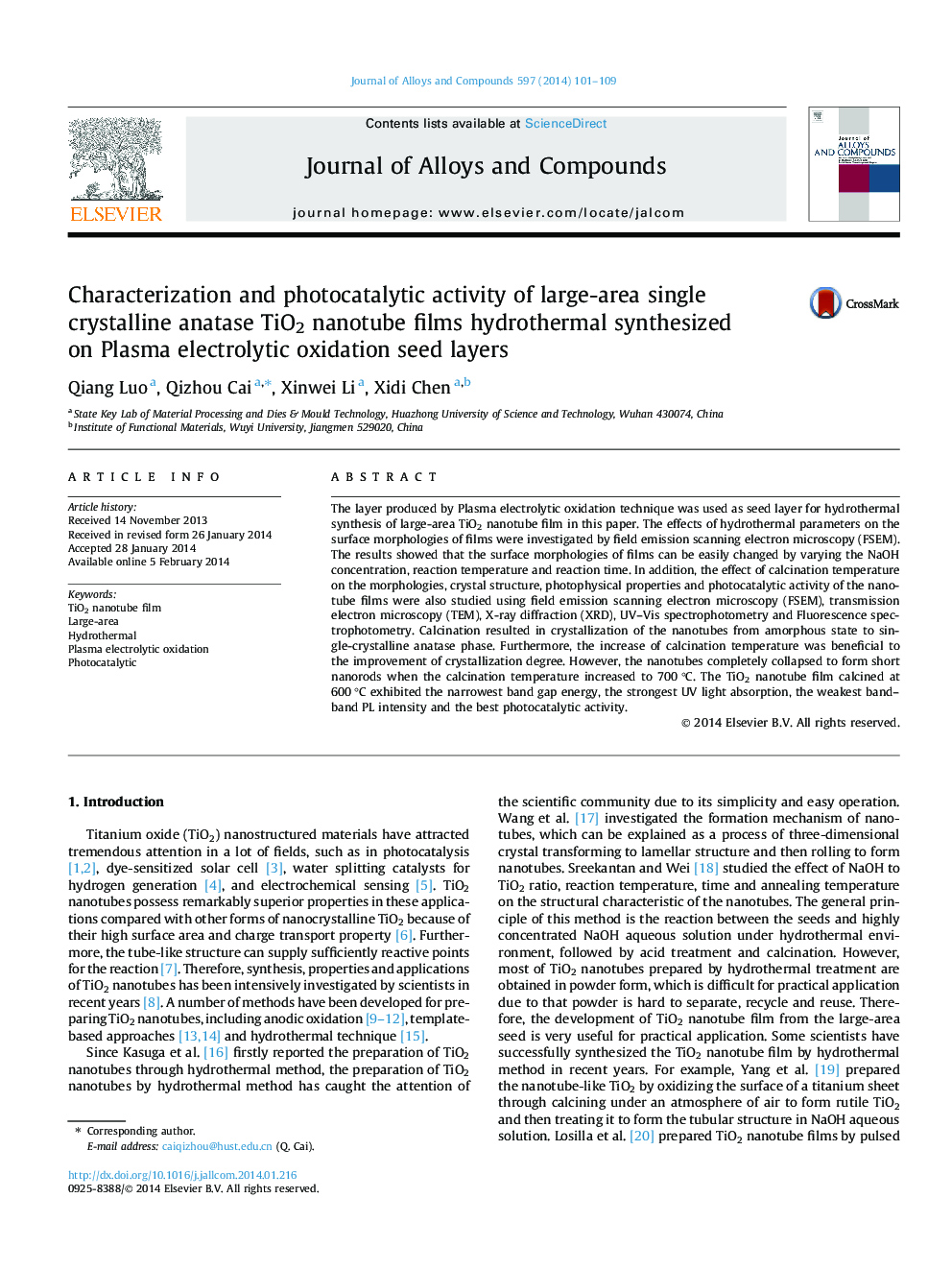| Article ID | Journal | Published Year | Pages | File Type |
|---|---|---|---|---|
| 1611897 | Journal of Alloys and Compounds | 2014 | 9 Pages |
•Plasma electrolytic oxidation layer was used for synthesis of TiO2 nanotube film.•The prepared nanotube film was large-area single crystalline anatase.•The formation mechanism and properties of films were systematically investigated.
The layer produced by Plasma electrolytic oxidation technique was used as seed layer for hydrothermal synthesis of large-area TiO2 nanotube film in this paper. The effects of hydrothermal parameters on the surface morphologies of films were investigated by field emission scanning electron microscopy (FSEM). The results showed that the surface morphologies of films can be easily changed by varying the NaOH concentration, reaction temperature and reaction time. In addition, the effect of calcination temperature on the morphologies, crystal structure, photophysical properties and photocatalytic activity of the nanotube films were also studied using field emission scanning electron microscopy (FSEM), transmission electron microscopy (TEM), X-ray diffraction (XRD), UV–Vis spectrophotometry and Fluorescence spectrophotometry. Calcination resulted in crystallization of the nanotubes from amorphous state to single-crystalline anatase phase. Furthermore, the increase of calcination temperature was beneficial to the improvement of crystallization degree. However, the nanotubes completely collapsed to form short nanorods when the calcination temperature increased to 700 °C. The TiO2 nanotube film calcined at 600 °C exhibited the narrowest band gap energy, the strongest UV light absorption, the weakest band–band PL intensity and the best photocatalytic activity.
